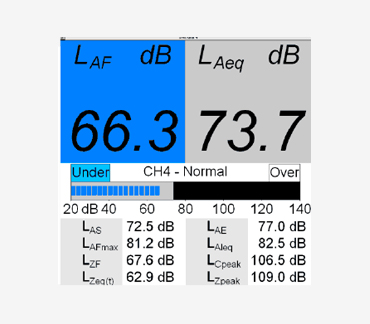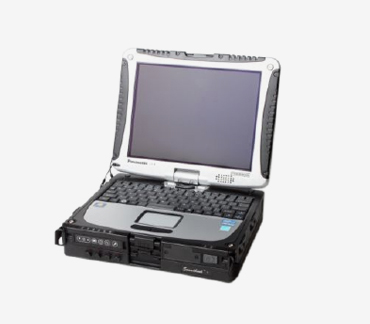Multi-Channel Sound Level Meter Type 1
By SINUS Messtechnik GmbH
See below for Soundbook configurations and NoisePAD configurations
Description
Soundbook configurations include:
- Single Channel: Soundbook + Gooseneck + Microphone
- Multi-Channel: Soundbook + Microphones and cables (2,4,8, up to 48 channels)
- Multi-Channel: Soundbook + Wireless Microphones (including individual transmitters and receivers)
NoisePad Configurations include:
- Single Channel: NoisePad + Microphone + Cables
- Multi-Channel: Noise Pad + Microphones + Cables (2 to 4 channels)
The Soundbook can become Type 1 Sound Level Meter and Analyser by the addition of a gooseneck fitted with a Class 1 microphone (for single channel measurements), or with multiple microphones with cables or wireless transmitters and receivers. In each case SAMURAI software is used for analysis and display of results on the Soundbook screen (up to 16 windows simultaneously).
Similarly, the NoisePad can become a Type 1 Sound Level Meter and Analyser as a single channel or multi-channel sound levels meter with the addition of cables and microphones.
All measurements are recorded as individual files and can be replayed or re-analysed suing different acoustic parameters on a laptop or desktop computer back in the office. Each actual measurement can be replayed in the office as if live on-site, if desired. The SAMURAI software does not require a license to replay or re-analyse the measured sound level data.
The replay and re-analyse feature of SAMURAI software is a really important feature which is not generally available in standard hand-held sound level meters or similar multi-channel devices.
The SAMURAI software includes features such as:
SAMURAI software – Sound Level Meter
- Class 1 according to IEC 60561, 60804, 61672
- Simultaneous A, C, Z frequency weightings
- Time weightings Fast, Slow, Impulse
- Lp, Lmax, Lmin, Leq, Lpeak of all level values
- LE, Ln
- 10 Percentiles
- Acquisition of impulse and low-frequency levels
- Parallel storage of up to 5 sound level meters per channel with 61 measurement values at freely adjustable time intervals
- Triggered storage possible
1/3 octave and octave analyzer
- 1/3 octave filter according to IEC 61260 Class 0
- Third-octave and octave band analysis in real time
- Third-octave middle frequencies from 0.04 Hz … 80 kHz
- Selectable third-octave band ranges (acoustics, vibration and user-defined)
- Selectable averaging modes: linear, Fast, Slow, exponential
- Simultaneous display of momentary, max, min and Leq spectra
- Display and storage of total level
- Display as bar, contour or line graph
- Up to 5 third-octave and octave band analyzers per channel
- Triggered storage possible
It is possible to display multiple spectra on one graph such as Leq, Max or Live.
A reference spectrum curve can also be plotted on the spectrum graph.

Acoustic signal versus time recording – the SAMURAI software allows for display of acoustic signals as wav recordings.

A digital Level Recorder is also included in the basic SAMURAI software for all measurement channels. The level versus time history of each channel may be displayed. Multiple acoustic parameters can also be displayed and overlaid in real-time during each measurement (eg Linear and A-weighted levels, or 1/3 octave spectra).
Sonograms (Level versus frequency versus time) are also available in SAMURAI software for logarithmic levels (octave and fractional octaves), as well as FFT levels. The sonograms may be viewed in real-time during the site measurements by the operator.



